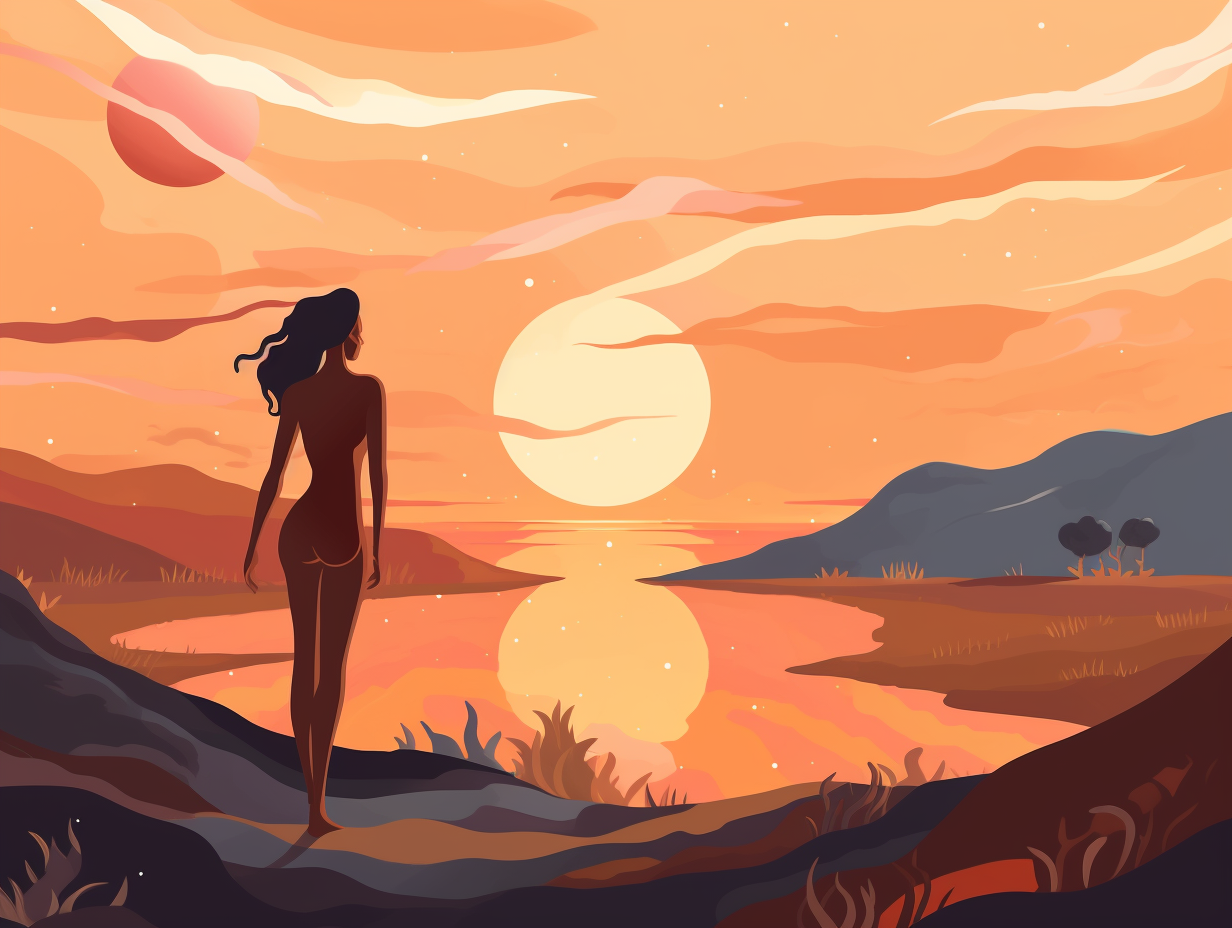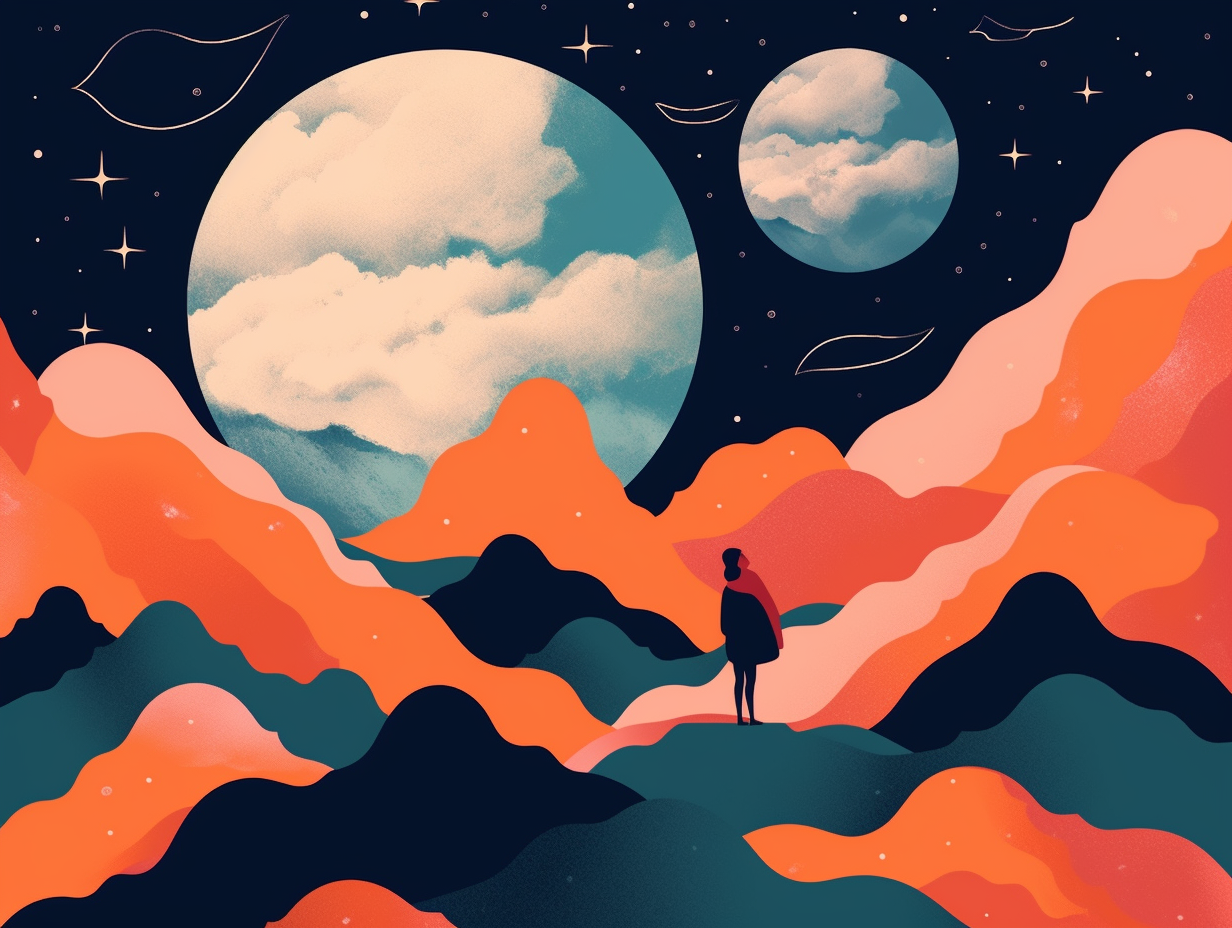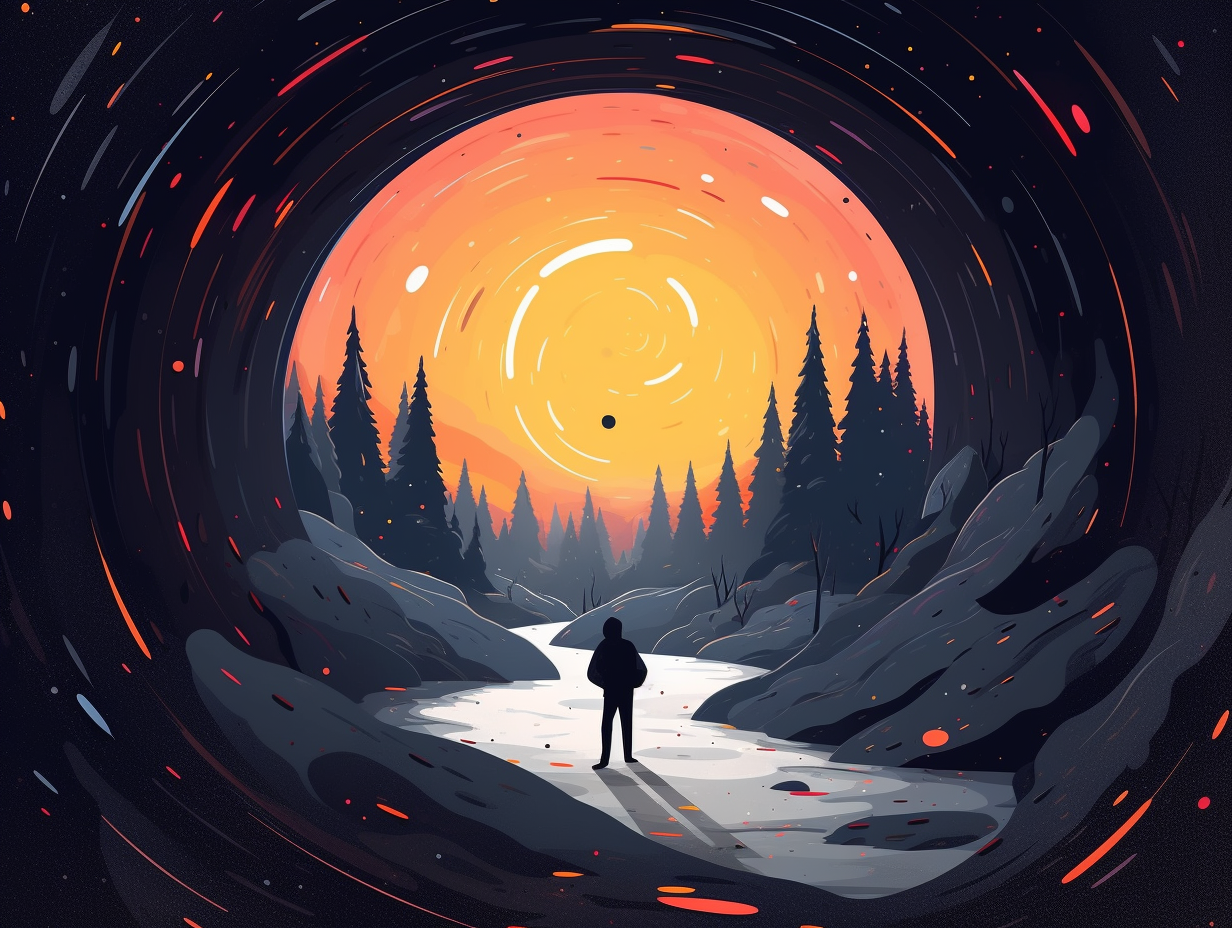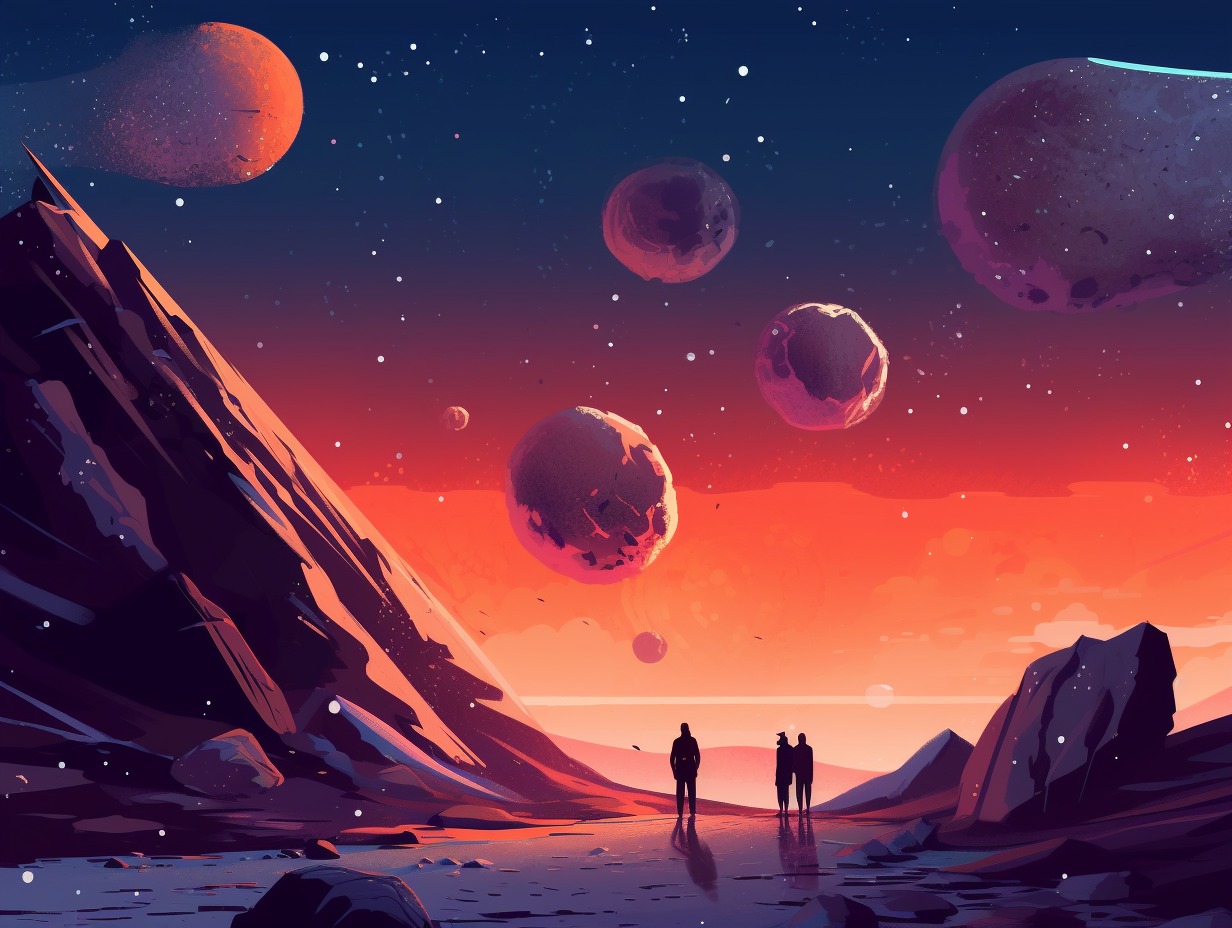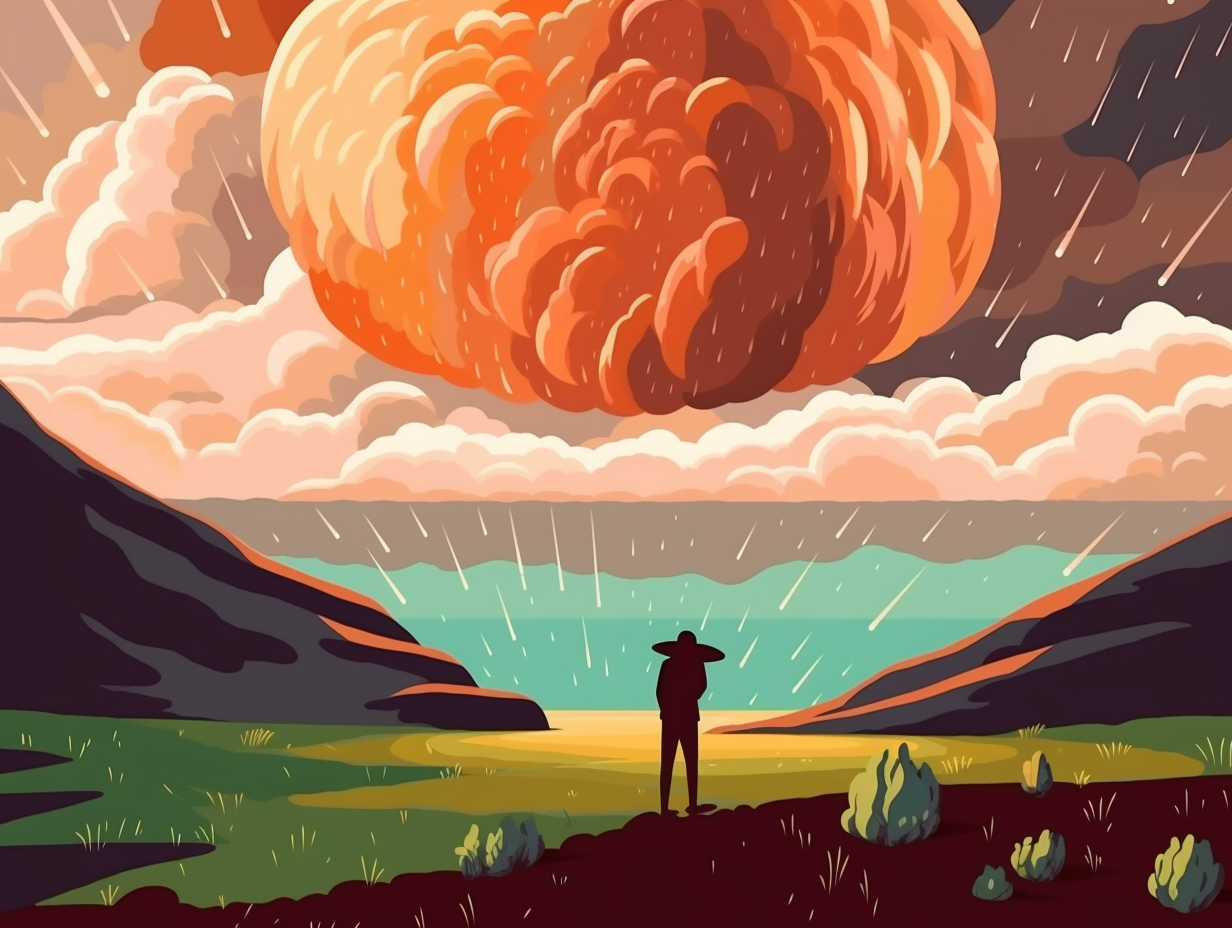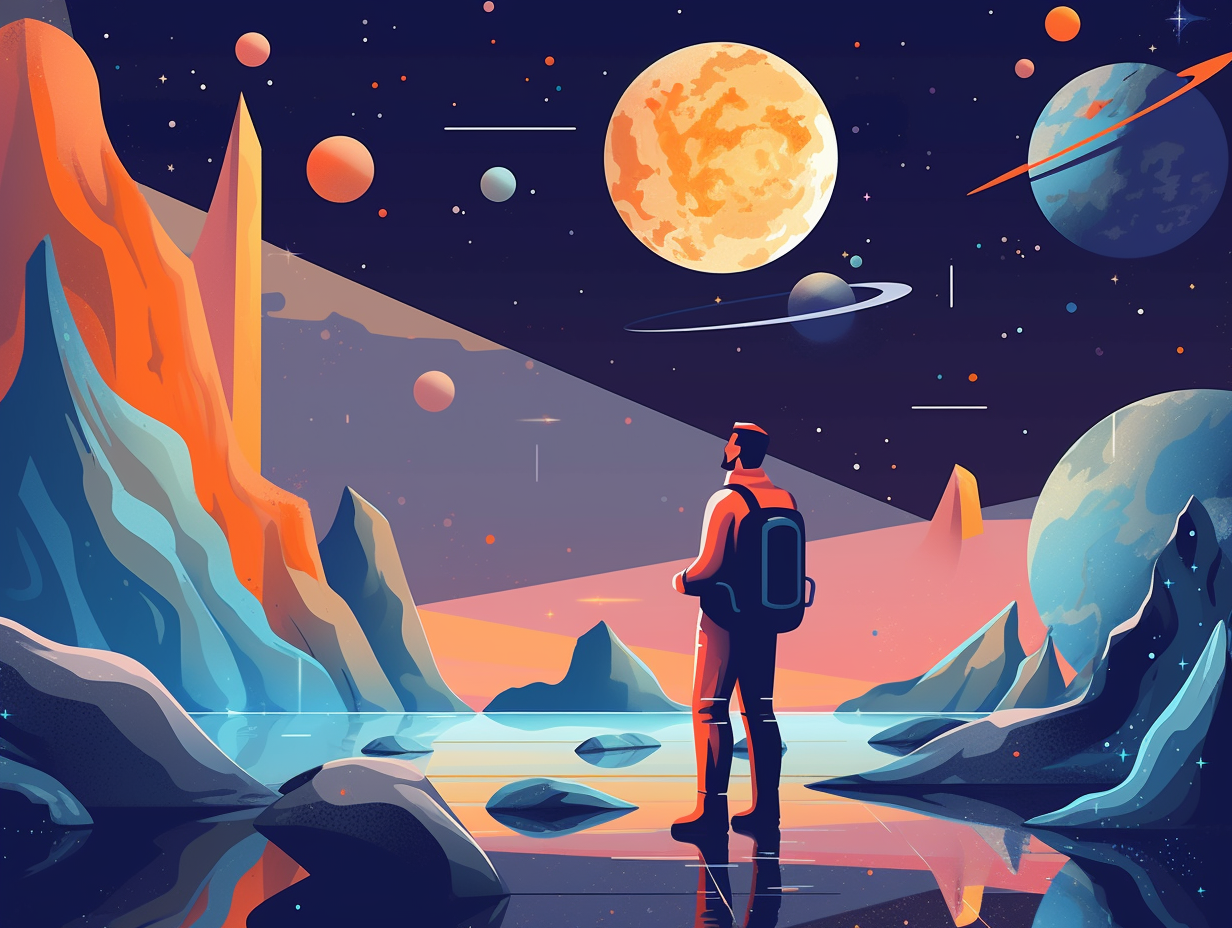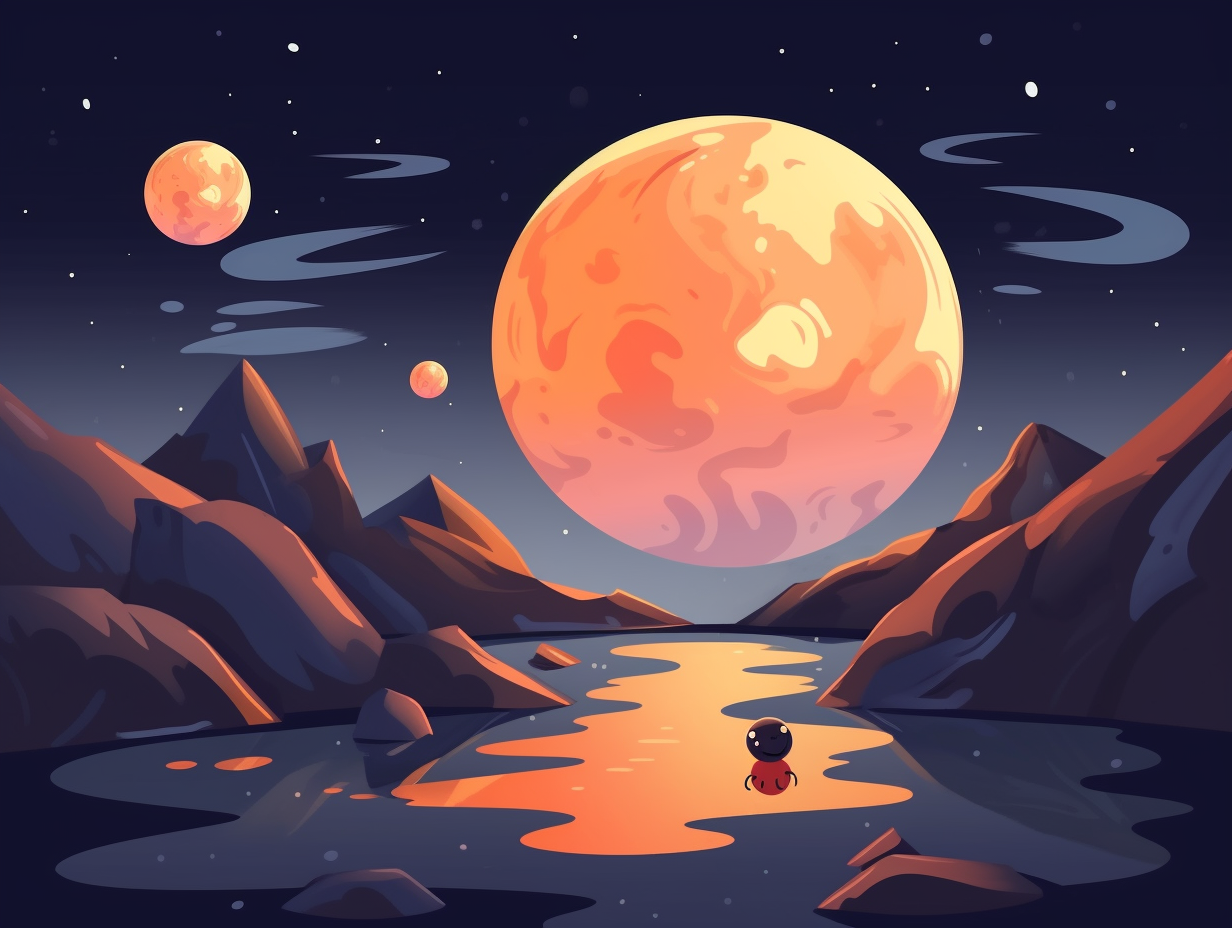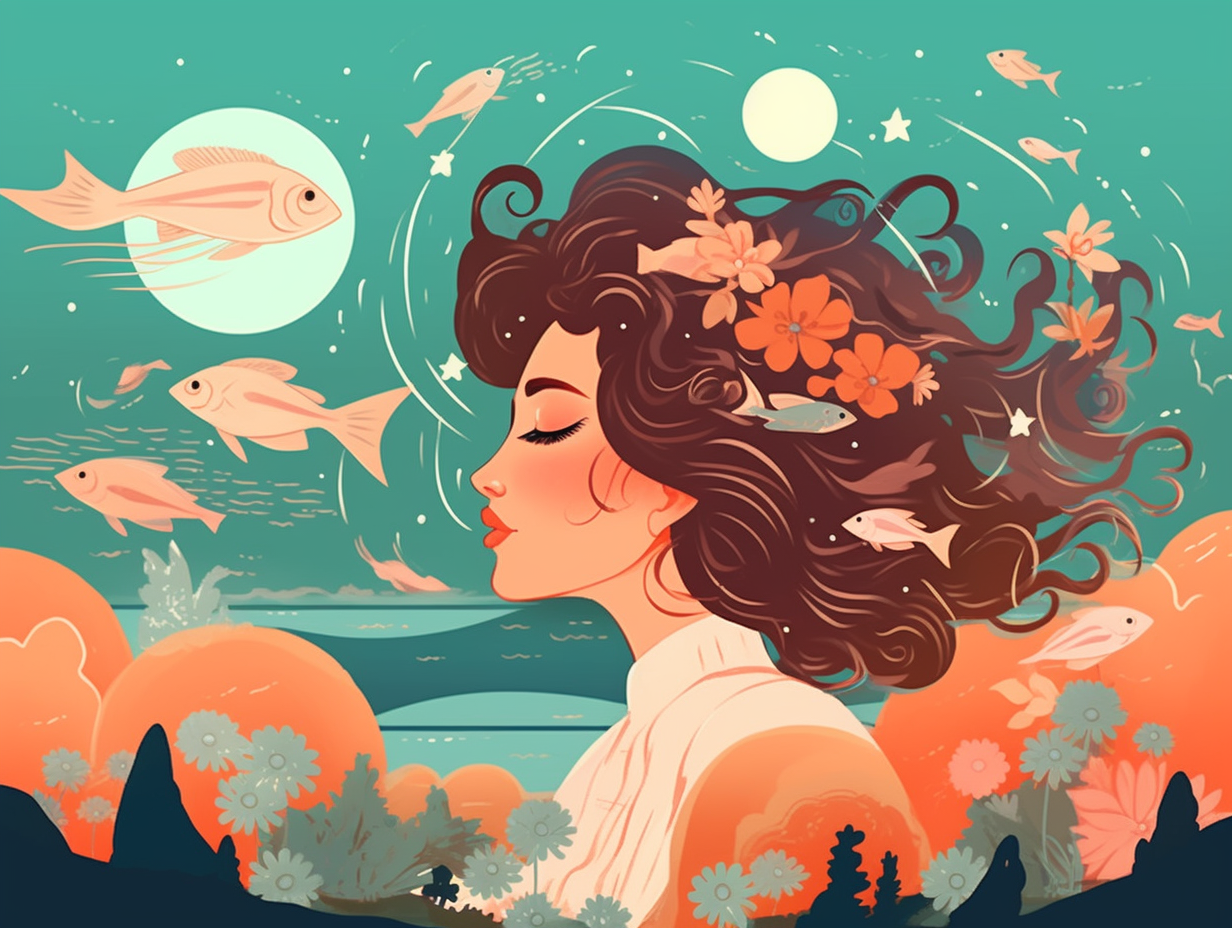23 Jaw-Dropping Fun Facts About Jupiter You Won't Believe!

1. Jovian Speed-Dating: 10-Hour Days
Ever feel like you're racing against time? Well, you might need to borrow a page from Jupiter's playbook: With a sidereal day of just under 10 hours, Jupiter has the shortest day of all the planets in our solar system, making one full rotation in less than half an Earth day!
Source => spaceplace.nasa.gov
2. Jupiter's Epic Moon Collection
Jupiter's got moons for days – actually, 95 of them, which is more than enough to share with its envious planetary neighbors: As of February 2023, Jupiter has the most confirmed moons in the solar system, including the famous quartet of Galilean moons – Io, Europa, Ganymede, and Callisto – and a smorgasbord of other celestial satellites varying in size, orbit, and potential for interplanetary amusement.
Source => en.wikipedia.org
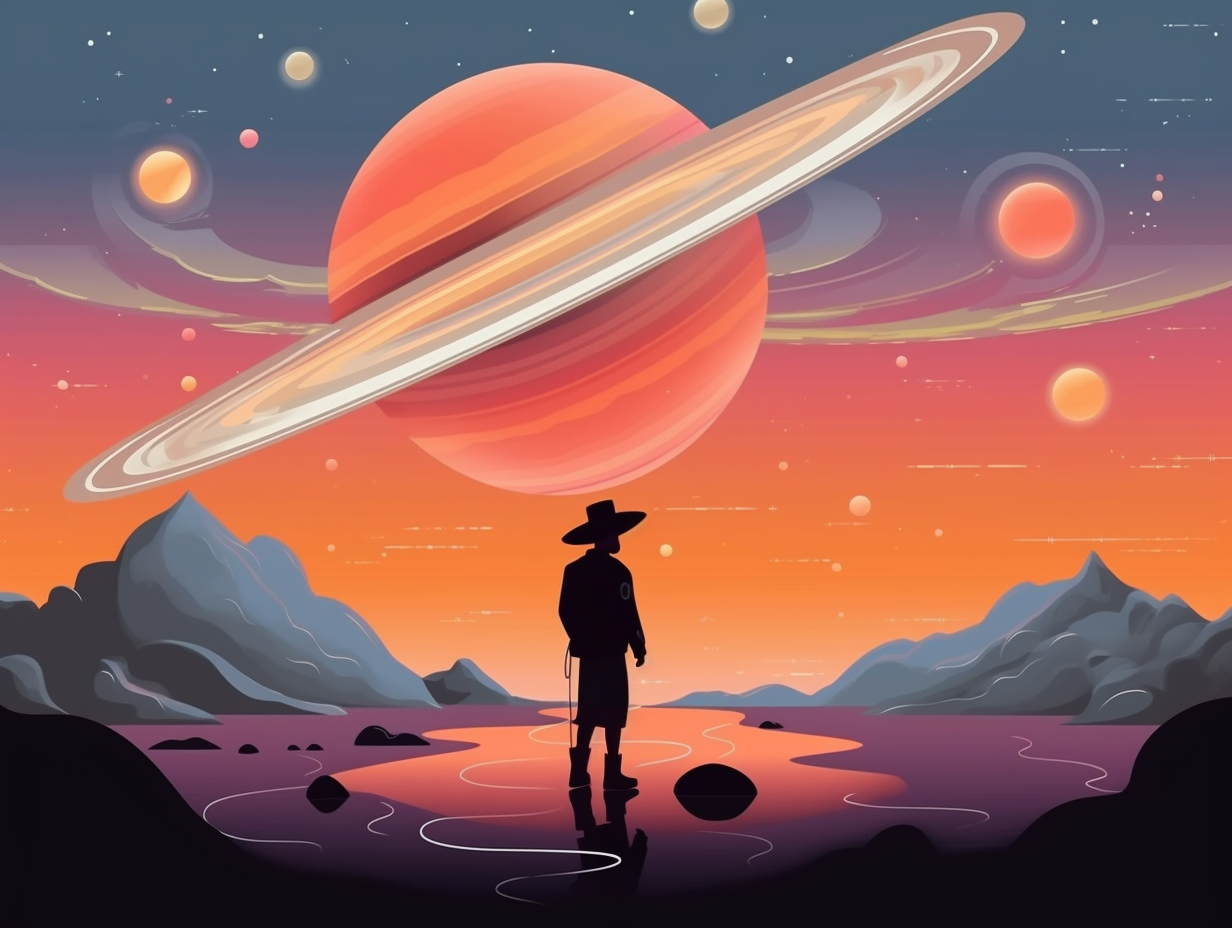
Skate through the cosmos and discover Saturn's icy rings! Made of water ice particles and influenced by the gravity of its moons, these majestic rings are a sight to behold. Glide into the world of planetary wonders on your next cosmic expedition!
=> Fun Facts about Saturn
3. A Never-Ending Stormy Bash
Notorious for throwing the wildest parties in the Solar System, Jupiter's Great Red Spot has been going strong for over 358 years with no end in sight: This massive anticyclonic storm sports winds up to 268 mph, giving it the title of the largest known storm in our celestial neighborhood. Its iconic red-orange hue remains as mysterious as the storm itself, while the intricate cloud patterns are a result of its unique elliptical shape and internal dynamics.
Source => en.wikipedia.org
4. The Magnetic Party King
As Zeus himself might have said, "It's electric! Boogie woogie, woogie": Jupiter flaunts the most powerful magnetic field among all planets in the solar system, second only to the Sun's own magnetic prowess. This colossal magnetosphere, courtesy of the planet's turbulent insides, shapes an electrified gas bubble so immense it would rival the size of our moon in the night sky if visible. A particle belt bristling with radiation orbits Jupiter, creating space hazards that could easily wreck an unsuspecting spacecraft.
Source => missionjuno.swri.edu

5. Volcanic High-Jump Champion: Io
If a high-flying volcanic eruption were an Olympic sport, Jupiter's moon Io would take home the gold: With eruptions soaring over 500 kilometers above its surface, Io isn't just a thrill-seeker's dream but also the most volcanically active object in our solar system, spewing charged particles that help create Jupiter's magnetosphere and stunning auroras.
Source => lasp.colorado.edu
6. Great Red Spot's Infinite Guest List
Whoever sent Jupiter's Great Red Spot an invite to the never-ending celestial party forgot to supply an exit strategy: This gargantuan tempest has been swirling in Jovian skies for at least 350 years and holds the record for being one of the longest-lasting storms in the solar system!
Source => planetary.org
7. Jupiter's Aurora Fashion Statement
Jupiter's auroras have serious FOMO, outshining Earth's northern lights like a diva rocking up to a red carpet event: producing a million MegaWatts of power output, these Jovian light shows are 100 times stronger than Earth's auroras and guzzle energy equivalent to a large city. Scientists believe their fabulousness emanates from both the moon Io and deep-rooted particle currents in Jupiter's magnetotail, with more investigation required to fully grasp the connection between aurora-generating streams and Jupiter's legendary radio gossip, known as "DAM."
Source => windows2universe.org
8. High-Speed Aging on Jupiter
Imagine hitting the gas pedal on aging and cruising down Wrinkles Highway: Life on Jupiter would actually speed up the aging process due to a stronger gravitational field causing time to move more slowly, as per gravitational time dilation, ultimately making us age faster compared to living on Earth.
Source => exoplanetscience.org
9. Jupiter's Energizer Storm Bunny
Who needs the Energizer Bunny when you've got Jupiter's Great Red Spot? This astronomical Duracell just keeps going and going: The colossal storm, bigger than Earth itself, has been howling for over 300 years, and NASA's Juno probe reveals it to have vortices extending over 200 miles (350 kilometers) with a concentrated mass that could be detected by instruments studying Jupiter's gravity field.
Source => solarsystem.nasa.gov
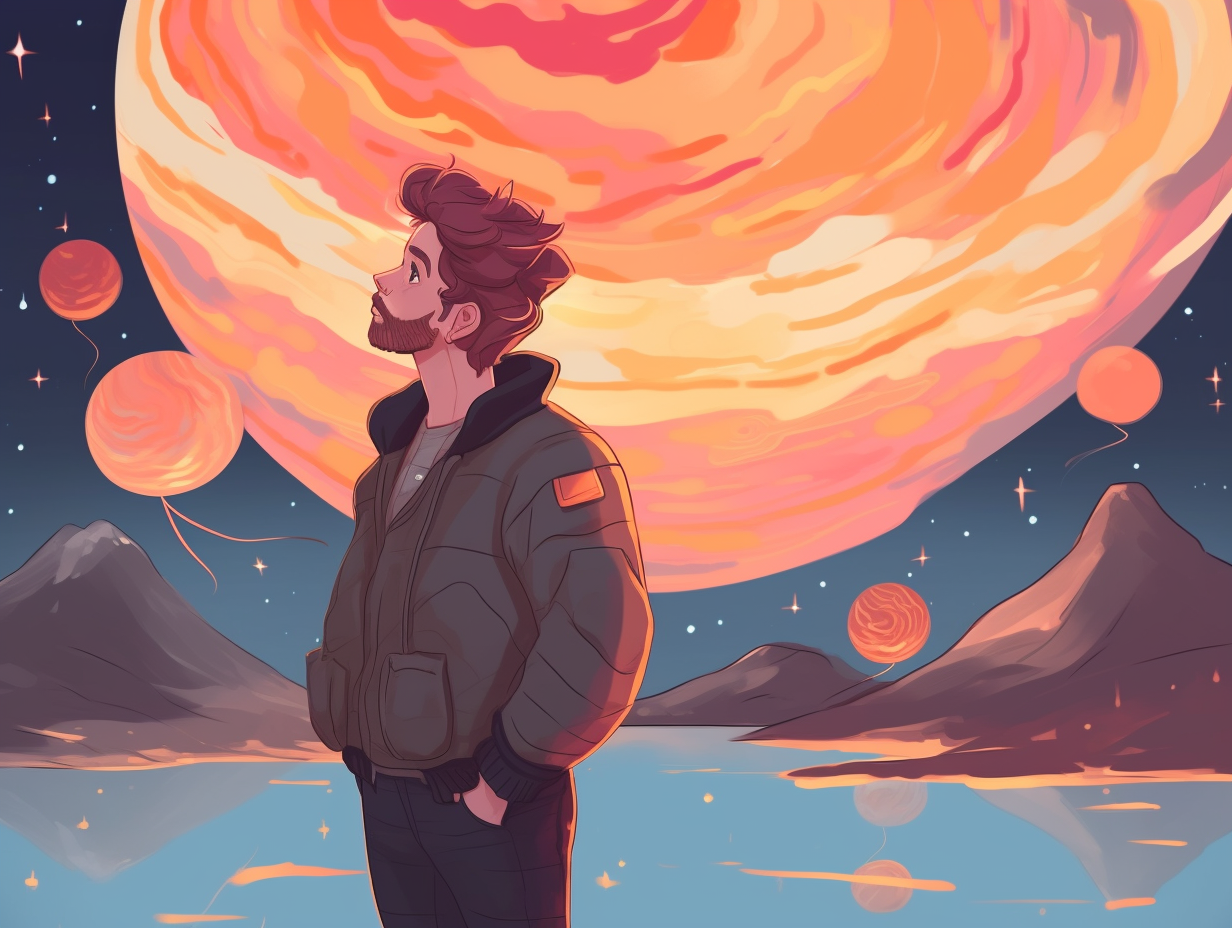
10. Jupiter's Dad Bod Fashion
Jupiter's got a bit of a dad bod, all bulging around the equator like it's one celestial barbecue away from needing a brand new set of asteroid belts: Due to its rapid rotation, Jupiter takes on an oblate spheroid shape with an equatorial diameter of 88,846 miles (142,984 km) and a polar diameter of 83,082 miles (133,708 km), making the distance around its equator a whopping 272,946 miles (439,264 km), over 10 times the Earth's circumference.
Source => space.com
11. Disco Ball Core Dance Party
Why did Jupiter lose its core privileges? Because it just couldn't resist going with the flow – the liquid metallic kind of flow, that is! : A dazzling concoction of liquid metallic hydrogen lies at its core, reflecting light like a cosmic disco ball, while its speedy rotation generates the solar system's most massive magnetic field, stretching 450 million miles.
Source => science.nasa.gov
12. Jupiter's Thunderous Light Shows
Jupiter's lightning storms make Thor himself green with envy: These tempestuous celestial light shows are hundreds of times more powerful than those on Earth, thanks to water clouds in its atmosphere fueling some truly divine electrical mayhem.
Source => en.wikipedia.org
13. Taylor Swift, Meet Jupiter's Squad
Step aside, Taylor Swift, there's a new squad leader in town: Jupiter reigns supreme as the celestial celebrity with a squad of 80 moons to boast of, as of 2021! In fact, the fabulous four - Io, Europa, Ganymede, and Callisto - perform as Jupiter's A-list entourage, known as the Galilean moons, ever since they were discovered by Galileo Galilei in 1610. They've been rocking the cosmic scene with their unique geological features, like Io's "hot" volcanic activity and Europa's mysterious underground ocean rendezvous.
Source => solarsystem.nasa.gov
14. A Cosmic Keg Chiller in the Sky
Who needs a freezer when you've got Jupiter's Great Red Spot? As a primo icebox designed by Mother Nature herself, it's the ultimate chiller for cosmic keggers: This massive storm is larger than Earth and boasts temperatures dipping to a frosty -200°F (-130°C) - colder than our planet's iciest records. Plus, it's proven to be the life of the party for centuries on end, with no signs of being a quitter.
Source => solarsystem.nasa.gov
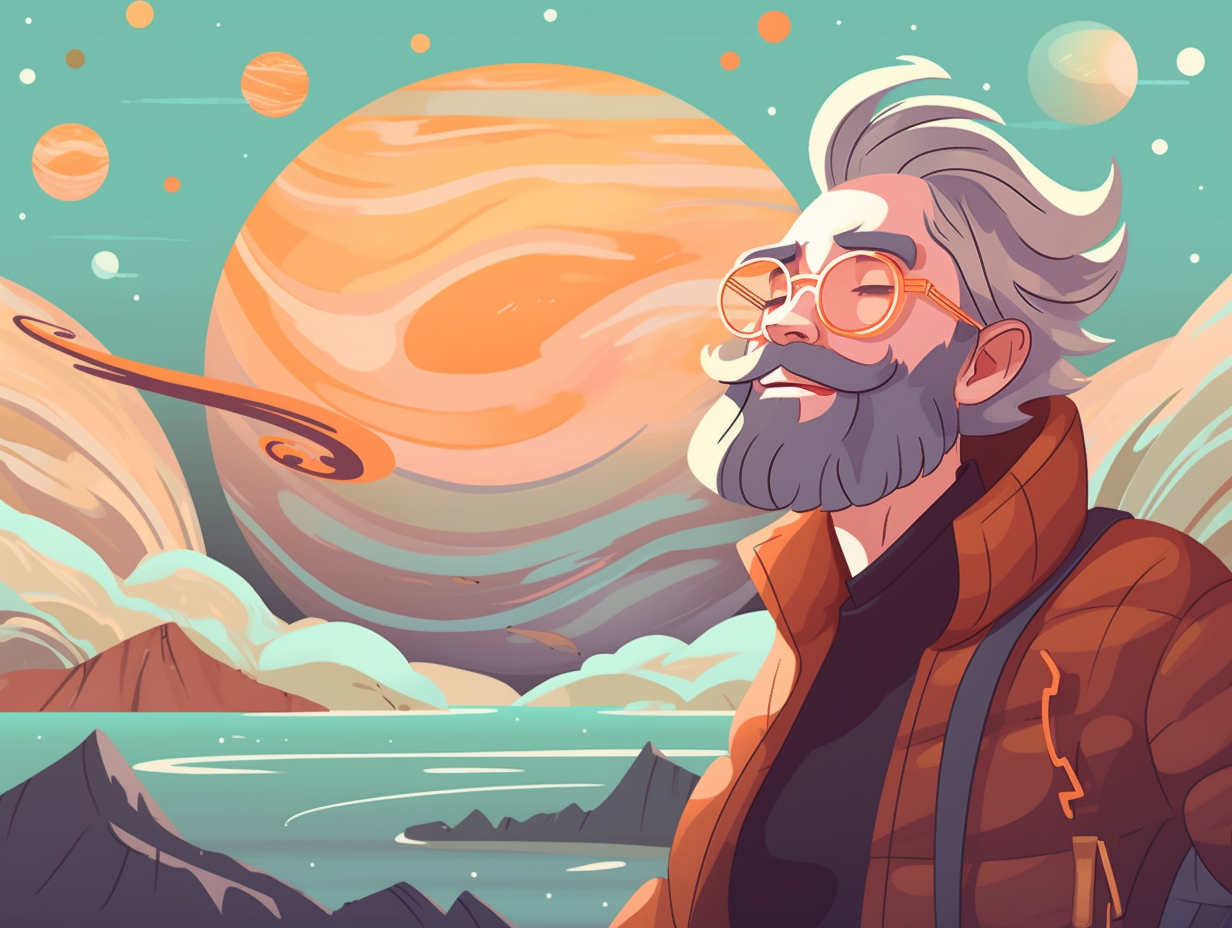
15. Biggest Loser Winner: Jupiter
If Jupiter were a contestant on "The Biggest Loser", it would not just win, but unite all planets in weight gain solidarity: Boasting a diameter capable of fitting 11 Earths side by side, Jupiter's colossal size grants it a gravitational pull 2.5 times stronger than Earth's, making it the "king of planets" and our Solar System's very own cosmic vacuum cleaner, deflecting and absorbing asteroids and comets like a planetary superhero.
Source => universetoday.com
16. Herculean Jupiter on a Hamster Wheel
Jupiter, the hefty Herculean heavyweight of planets, spins at speeds that would make a hamster-run treadmill blush with envy: In just 9 hours and 55 minutes, it completes a full rotation at its equator, making its day much shorter than Earth's 24-hour day and spinning at a breakneck speed of 45,583 km/h, earning it the title of the fastest rotating planet in our solar system.
Source => sos.noaa.gov
17. Jupiter's Swirly Beauty Mark
Here's an amusing Earthling perspective for you – imagine having a facial blemish so enormous, it could swallow our entire planet! Jupiter must feel royally rosy about its beauty-mark-turned-disco-ball: The Great Red Spot, initially an oval-shaped storm bigger than Earth, has become more circular over time. Even better for this cosmic debutante, its colors have evolved from brick-red to a fabulous salmon hue, a change scientists suspect is due to alterations in the cloud's chemical composition.
Source => solarsystem.nasa.gov
18. Jealous Sibling Storm Showdown
If Earth's storms had a jealous older sibling, it would be Jupiter's Great Red Spot: a superstorm twice the size of Earth that's been throwing a tantrum for at least 150 years.
Source => businessinsider.com
19. Electrifying Ammonia Hail Party
Guess who's having an electrifying party up in the clouds: Jupiter's experiencing multiple types of lightning, including a shallow form originating high in its atmosphere, thanks to ammonia-water hail! This chilly revelation was uncovered by NASA's Juno spacecraft, also shedding light on the mysterious ammonia shortage in some parts of the giant planet since 2016.
Source => planetary.org
20. Jupiter's Stylish Cloud Wardrobe
Jupiter: the ultimate trendsetter, sporting striped designer clouds with impeccable color coordination – who wouldn't want that on their runway? Here's the stitch: Jupiter's atmosphere is filled with belts and zones of colorful gas, creating fashion-forward patterns of jet streams that can reach speeds of over 100 m/s, making even the Great Red Spot a fabulous and longstanding spectacle.
Source => en.wikipedia.org
21. Jupiter's A+ Speed School Degree
Well, Jupiter must have gone to speed school, because it's really spinning circles around the rest of us: The giant planet rotates faster than any other in our solar system, taking only 10 hours to complete one full spin, although its day is technically defined by its 12-year orbit around the Sun.
Source => solarsystem.nasa.gov
22. High Score: Spot the Earths
In a cosmic game of "how many Earths can you fit," Jupiter's Great Red Spot is a top contender for the high score: This behemoth of a storm, raging for at least 300 years, has enough room to comfortably fit two or three Earths!
Source => space.com
23. Gravity Smackdown: Moon Hoarder
Jupiter, the solar system's celestial hoarder of moons, has a gravity that's so intense it basically plays Four Square with asteroids and comets: Jupiter's powerful gravitational force has captured at least 64 moons and can even tear apart celestial objects, which was evident in the 1994 collision of Comet P/Shoemaker-Levy 9, revealing new information about its atmosphere and effects on other planets' orbits.
Source => universetoday.com
Related Fun Facts




